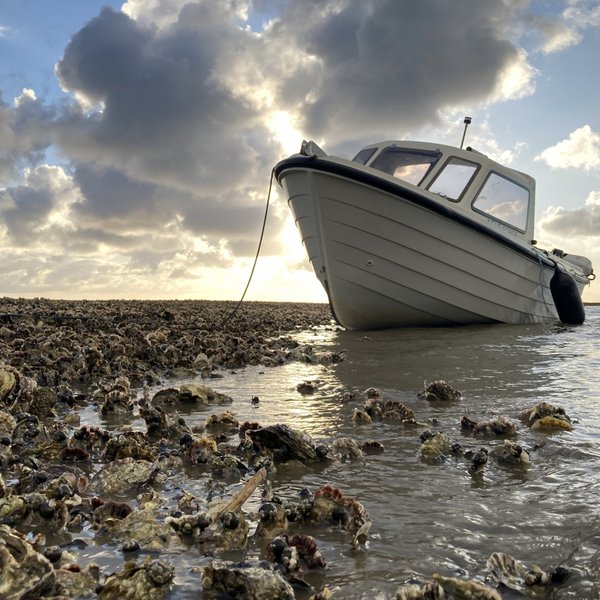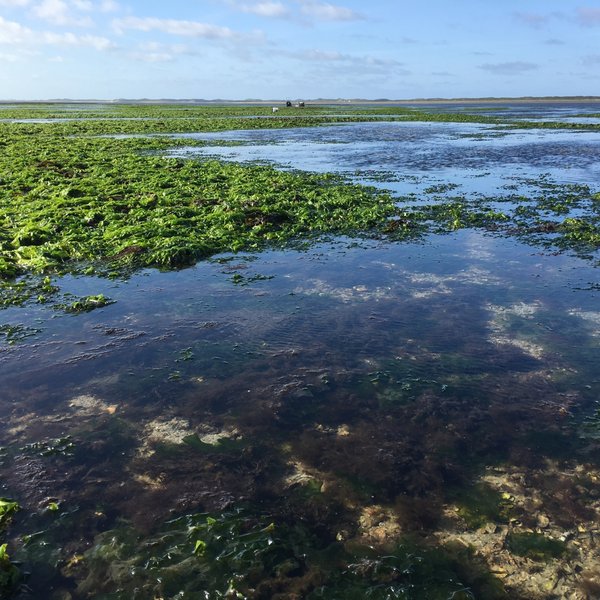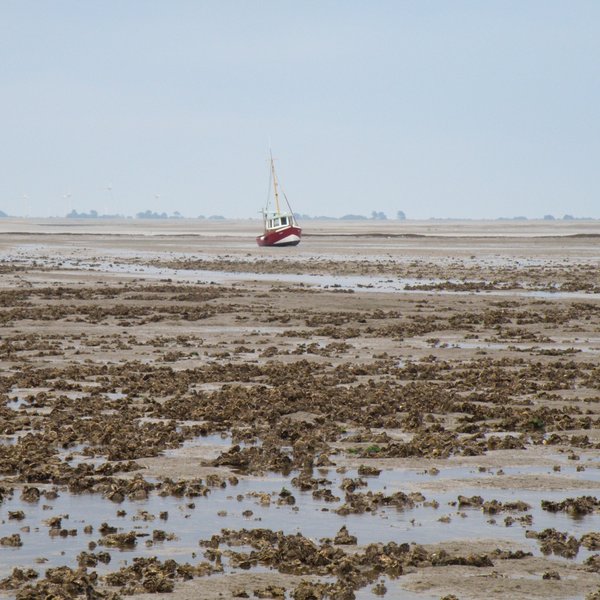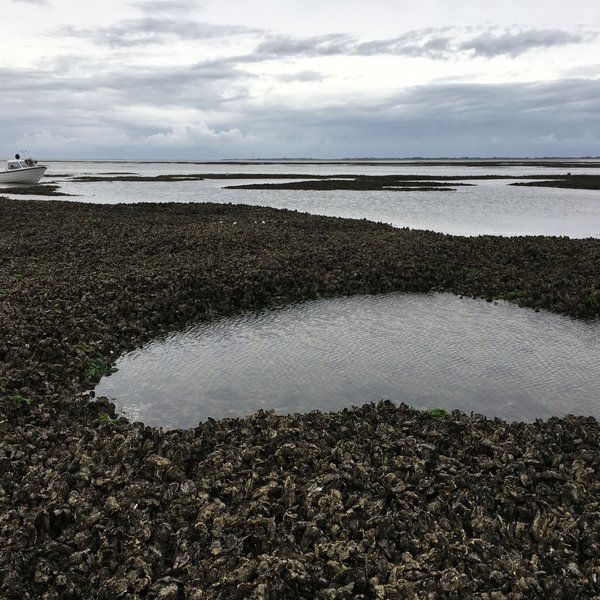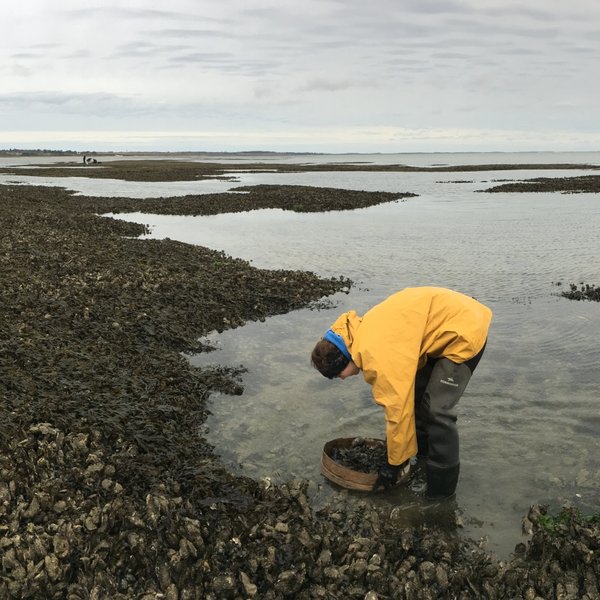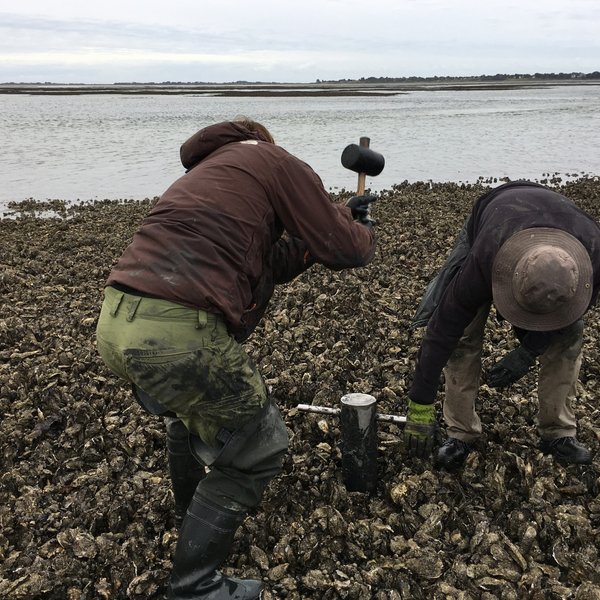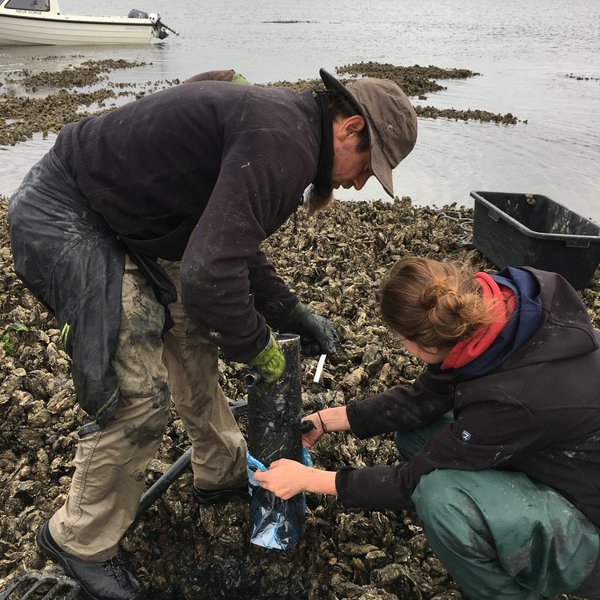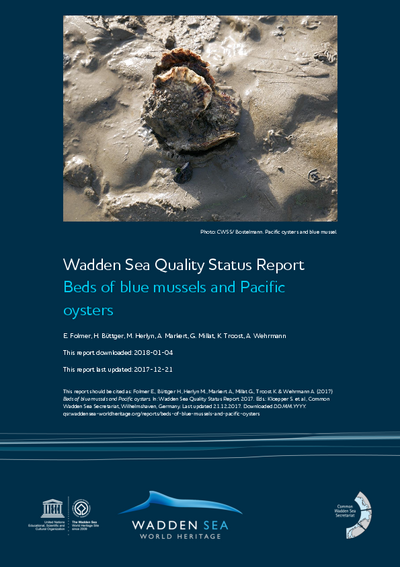Blue mussel and oyster monitoring
Since 1998, blue mussel beds in the Schleswig-Holstein Wadden Sea are monitored within the framework of the Trilateral Monitoring and Assessment Program every year. Since 2006, the Pacific oyster (Magallana gigas) population has also been recorded in parallel.
How do mussel beds change over time?
Mussel beds are among the most diverse communities in the Wadden Sea, serving as valuable food source and important habitat for birds, fish and invertebrates.
Mussel monitoring serves to gain an annual overview of the composition, structure and dynamics of the mussel beds and to document the long-term development of the mussel populations.
For this purpose, the eulittoral populations of blue mussels (Mytilus edulis) are recorded annually. In addition, the sublittoral occurrences are investigated selectively.
The Pacific oyster (Magallana gigas) has been spreading increasingly on the eulittoral mussel beds since the 1990s. Since 2006, the species has also been recorded within the framework of this monitoring.
BioConsult SH carried out these surveys from 1998 to the beginning of 2014 and from 2019 to 2023.
Methods
Surveys of eulittoral mussel beds were mainly carried out between May and September. At low tide, the mussel beds can be reached from the shore or by boat to collect different scientific data. In on-site inspections, the contours of the beds are determined by GPS and the coverage is estimated. Samples are taken and later evaluated in the laboratory to determine abundance, length frequency distribution, biomass and condition index of the mussels.
The species community of four typical mussel beds is documented additionally. In September, the accompanying fauna is sampled to collect data on the structure and dynamics of the endo- and epibenthos.
In addition to the local data collection, digital aerial photographs are available for some years to ensure comprehensive monitoring. The digital photographs of the entire North Frisian and partly Dithmarschen Wadden Sea were used to verify known beds and to identify freshly colonised eulittoral areas.
The strategy to monitor mussels has been agreed between Denmark, Germany and The Netherlands in the Trilateral Monitoring and Assessment Program (TMAG 1991) (see Nehls & Büttger 2006).
Publications
Miesmuschelmonitoring 1998-2005 im Nationalpark Schleswig-Holsteinisches Wattenmeer. Ein Projekt im Rahmen des Trilateral Monitoring and Assessment Program (TMAP)
(Hrsg. BioConsult SH). Husum (DEU), Im Auftrag des Landesamtes für den Nationalpark Schleswig-Holsteinisches Wattenmeer, S: 165
Beds of blue mussels and Pacific oysters
In: Wadden Sea Quality Status Report 2017. Eds.: Kloepper S. et al., Common Wadden Sea Secretariat, Wilhelmshaven, Germany. Last updated 21.12.2017. Downloaded 04.01.2017.
http://qsr.waddensea-worldheritage.org/reports/beds-blue-mussels-and-pacific-oysters
TMAP Manual. The Trilateral Monitoring and Assessment Program (TMAP).
Common Wadden Sea Secretariat/Wilhelmshaven (DEU)
Further information
BioConsult SH carried out the project from 1998 to the beginning of 2014 and from 2019 to 2023.


